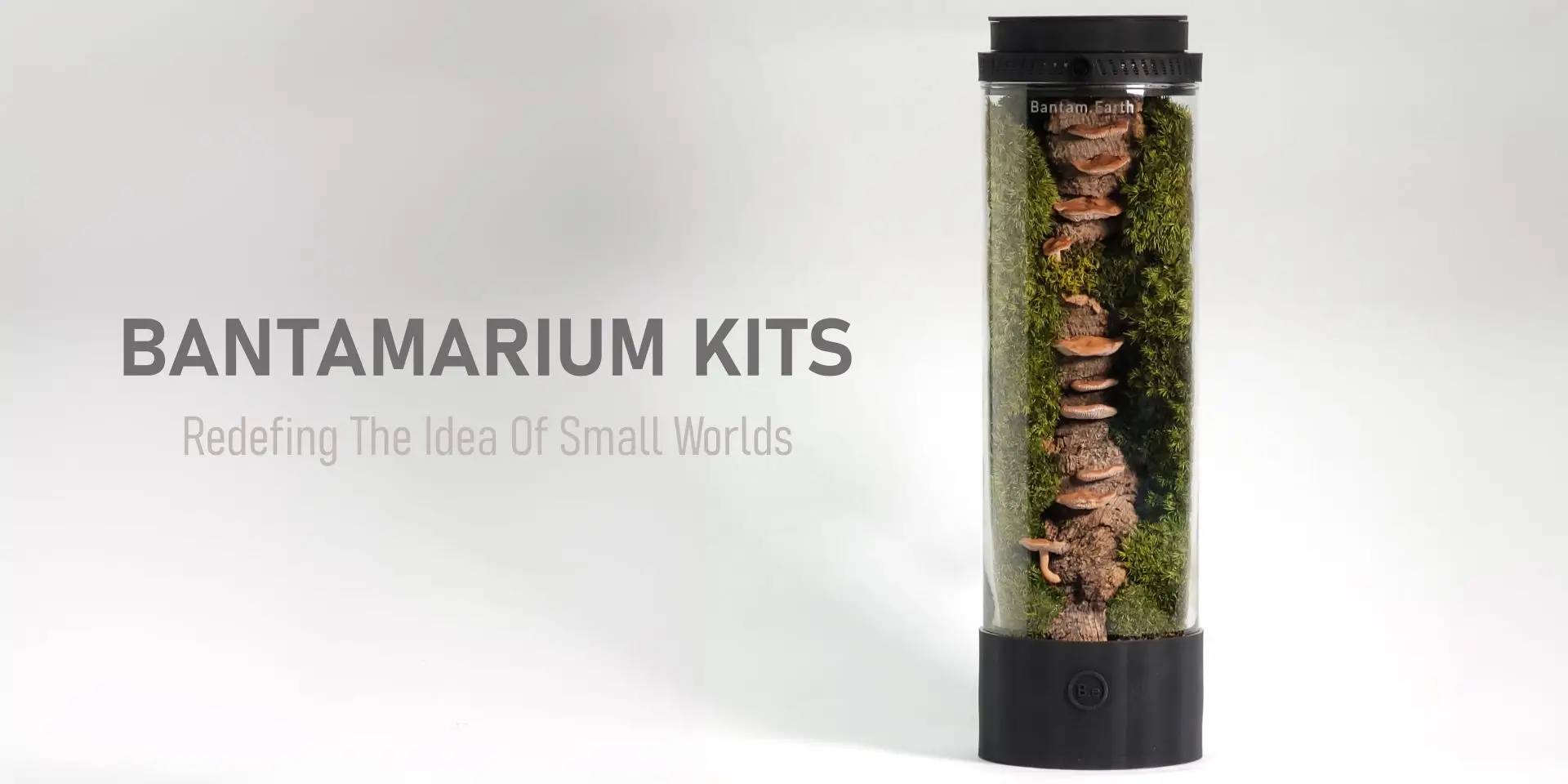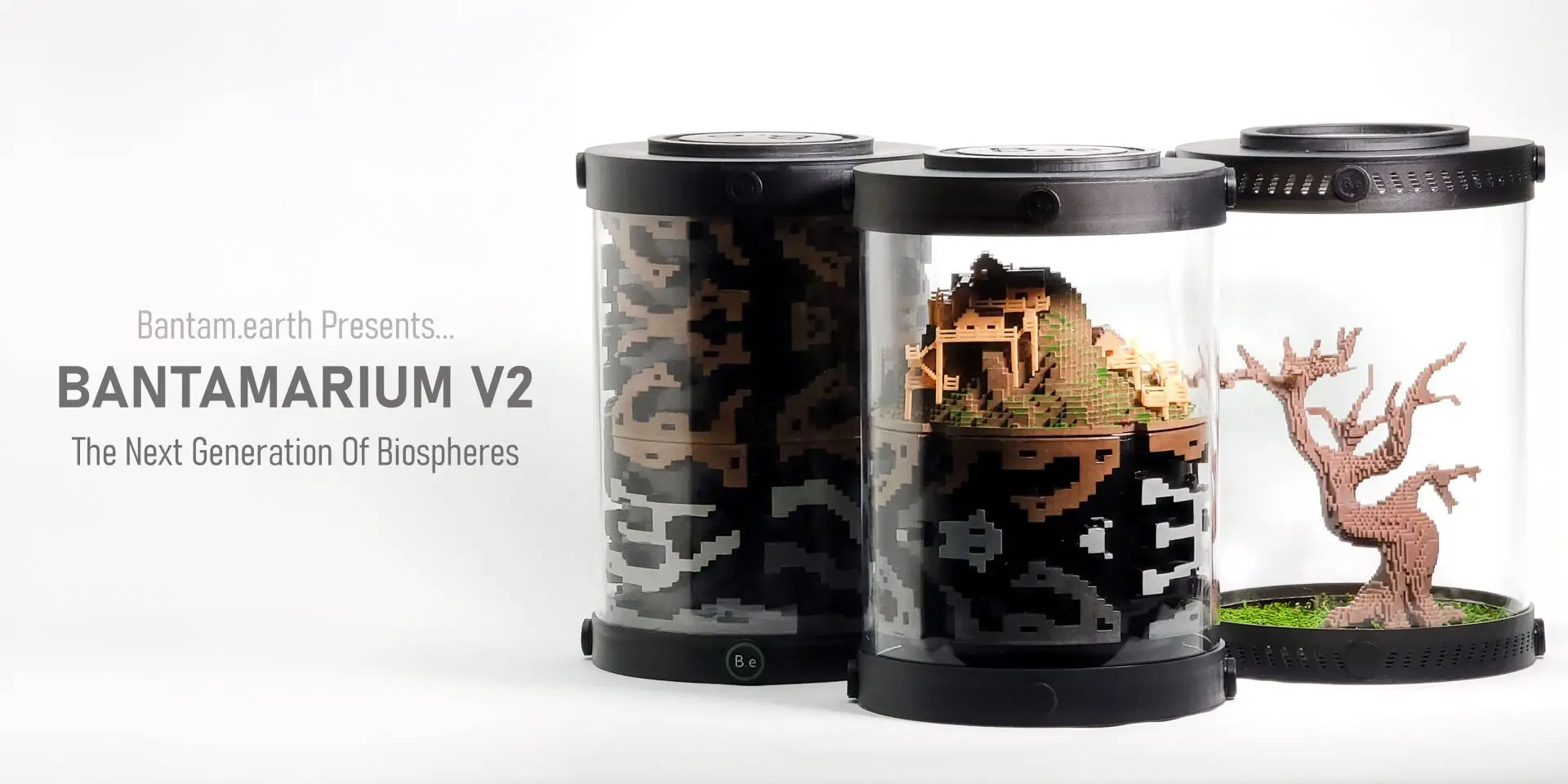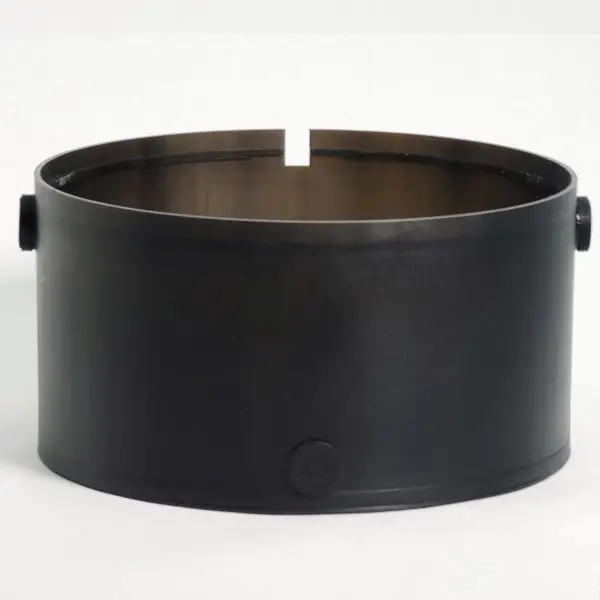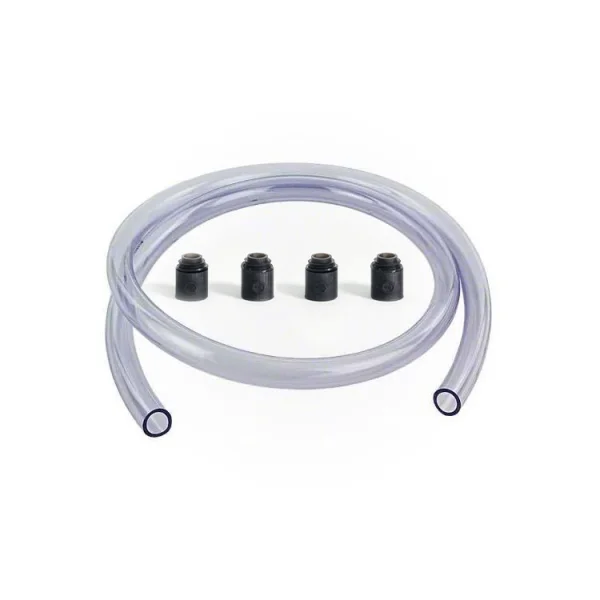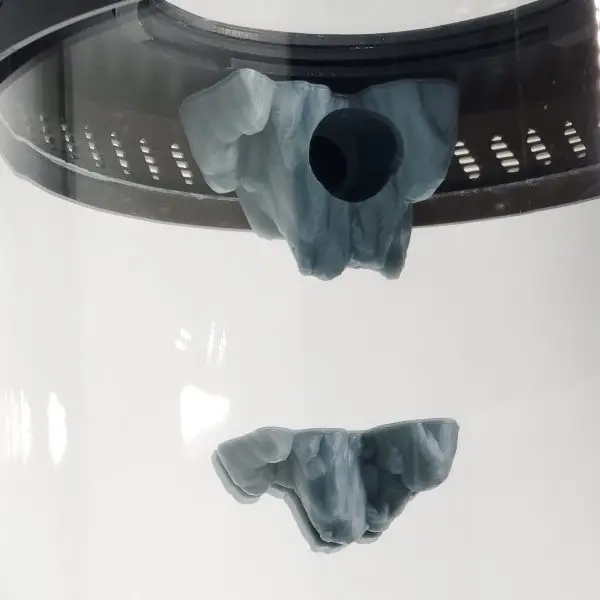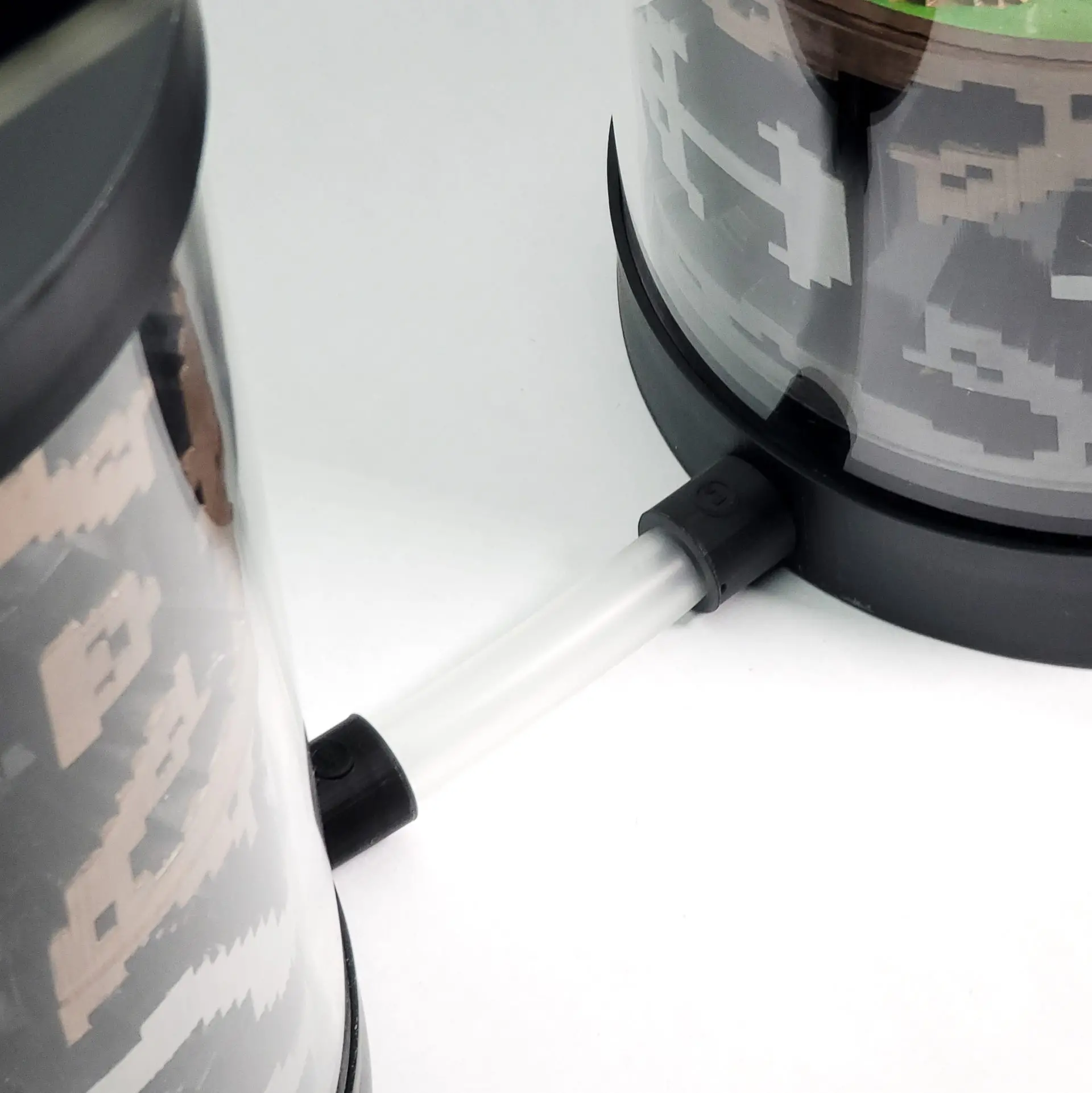As a passionate creator dedicated to the art and science of creating thriving ecosystems, I am thrilled to introduce you to the Bantamarium… A revolutionary advancement in the world of vivariums.
This innovative enclosure transcends traditional “ariums” (terrariums, aquariums, and paludariums), offering unparalleled customization and adaptability.
Designed with aesthetic beauty and functional excellence in mind, the Bantamarium allows enthusiasts to create and maintain miniature habitats that cater to the specific needs of their inhabitants.
Join me as we explore the unique features and transformative potential of the Bantamarium, an invention poised to redefine the standards of vivarium design and care.
Table Of Contents:
ToggleWhat Is a Bantamarium?
A Bantamarium is a customizable and expandable enclosure designed to create tailored mini-ecosystems for small creatures and vivarium plants, combining functionality with aesthetic appeal. Ideal for both decorative and bioactive setups, Bantamariums adapt to the specific needs of your inhabitants.
The prefix bantam is a synonym for words like miniature or tiny. Bantamarium, as a word, would translate to “a miniature enclosure.” Bantamaria would be used to describe multiple living dioramas or a room dedicated to the theme of the ideology.
Bantamarium Versions
The journey of the Bantamarium began with a vision to blend the captivating beauty of decorative terrariums with the intricate complexity of functional ecosystems.
The Decorative Series
The original Bantamarium Version 1 (or Bantam V1) was crafted as an artistic representation of nature, showcasing preserved plants, soil, rocks, and meticulously arranged decor.
These decorative terrariums became beloved pieces of living art, perfect for those who appreciated the aesthetic allure of nature without the demands of ongoing maintenance.
The Habitat Series
However, the evolution into the Bantamarium Version 2 (or Bantam V2) marked a significant leap forward, driven by a desire to create vivarium enclosures that could support dynamic, thriving ecosystems.
The Bantam V2 series introduced customizable and expandable habitats designed for live plants and small critters, transforming them from mere decorative pieces into vibrant, self-sustaining environments.
These advanced enclosures feature specialized substrates, functional decor, and adaptable configurations that can be tailored to the specific needs of their inhabitants, from ants and jumping spiders to other common insects.
The Right One For You?
For those considering embarking on their bantamarium journey, the choice between the Bantam V1 and V2 depends on the experience they seek.
The V1 series offers a visually stunning, low-maintenance option ideal for those who appreciate static beauty and simplicity.
In contrast, the V2 series is perfect for enthusiasts eager to create and nurture active, bioactive ecosystems, where the joy of observing and interacting with a living habitat takes center stage.
Both versions embody the essence of the Bantamarium, each vivarium kit caters to different aspects of the hobby while maintaining a commitment to quality and innovation.
Bantamarium Features
The Bantam V2 is designed with versatility and user customization at its core. With a variety of interchangeable components and add-ons, this innovative enclosure allows you to tailor your habitat precisely to the needs of your inhabitants.
Whether you require different styles of lids and bases or additional functional accessories, the V2 habitats offer numerous options to create the perfect environment.
This section explores the customizable components that set Bantamarium enclosures apart, ensuring an adaptable and personalized experience for both you and your critters.


Interchangeable Lids and Bases
The Bantamarium V2 offers a range of interchangeable lids and bases, allowing for unparalleled customization to suit the unique needs of your habitat.
The bases come in various styles, including basic, vented, slim, and tall options, providing flexibility in the overall height and footprint of your enclosure.
Slim bases are ideal for creating sleek, low-profile setups, while tall bases offer additional vertical space, perfect for housing species that require more climbing/burrowing room.
Lids are available in slim, vented, and basic designs.
Vented lids ensure optimal airflow, maintaining a healthy environment for species that require high ventilation.
Basic lids, on the other hand, provide a more controlled environment, ideal for species that thrive in higher humidity or require privacy.
The interchangeable light top set adds another layer of customization. Choose from LED light tops, glass tops, or blackout caps.
LED light tops provide essential illumination and enhance the aesthetic appeal of the habitat.
Glass tops offer a clear view of the inhabitants while maintaining a stable environment.
Blackout caps create a dark, secure space, ideal for nocturnal species or those needing privacy to thrive.
Add-On Components
To further enhance the functionality of your Bantamarium V2, various add-on components can be easily integrated into the bases and lids.
These accessories are designed to cater to the specific needs of your inhabitants and your convenience.
One such add-on is the liquid feeder, which provides consistent humidity and liquid nutrition, ensuring your critters remain hydrated and healthy.
The liquid feeder is easy to install and can be attached to the base or lid, depending on your setup.
Another example add-on is the easy-to-carry handle strap from The “Adventure Set” Bug Catcher Kit.
This handle strap makes transporting your Bantam V2 enclosures effortless, whether you’re moving it to a different location in your home or taking it on the go.
The handle strap is durable and securely attaches to the enclosure, providing a safe and convenient way to carry your habitat.
These customizable components and add-ons make the Bantamarium V2 a truly versatile and adaptable enclosure, allowing you to create the perfect environment for your specific needs and preferences.
Bantam V2 Decor
The Bantamarium V2 decor options are more than just visually appealing; they are designed to enhance the functionality of your enclosure.
From stunning Bonsai Trees to clever magnetic ledges & cubby sets, these decor elements provide both beauty and utility.
The waterfall terrains create a dynamic and naturalistic environment, promoting humidity and offering a water source for inhabitants.
The modular ant nests, on the other hand, provide a customizable and expandable home for your ant colonies, ensuring they have a comfortable and secure habitat.
With these new decor options, the Bantamarium V2 not only looks great but also supports the well-being of your critters.
Expandability and Modularity
One of the standout features of the Bantamarium V2 is its unparalleled scalability and adaptiveness, allowing for both vertical and horizontal expansion to meet the needs of your growing colonies and climbing inhabitants.
Vertical Expansion:
Bantam V2 enclosures can be expanded vertically using mid-lids, which provide additional height for inhabitants who need more room to climb and explore.
This is particularly beneficial for species that thrive in vertical spaces, such as certain winged insects and caterpillars.
The mid-lids seamlessly integrate with the base and top components, ensuring a secure and stable enclosure that can accommodate the unique needs of your critters.
Horizontal Expansion:
For species like ants that require more horizontal space as their colonies grow, the V2 tanks offer horizontal expansion through portal ports on the lids and bases.
These ports allow multiple tanks to be connected, creating a larger, interconnected habitat.
This modular approach ensures that your ant colonies have plenty of room to roam, forage, and establish complex tunnel systems, all while maintaining easy access for observation and maintenance.
With the Bantamarium V2’s expandability and modularity, you can create a dynamic and adaptable environment that evolves with the needs of your inhabitants, ensuring they have the space and conditions necessary to thrive.
Different Bantamarium Biotypes
The Bantam V2 enclosures are designed to create optimal habitats for a variety of biotypes, including non-aquatic, aquatic, and semi-aquatic setups.
Each type of vivarium has specific requirements, and the customizable components of the Bantamarium V2 ensure that you can tailor your setup to meet the needs of your inhabitants.
Terrariums
Terrariums are versatile and can house a wide range of plant and animal species, from humid, tropical environments to arid, desert landscapes.
Bantam V2 tanks can be configured with any combination of components to suit your specific terrarium biotype.
For high-humidity terrariums, using a sealed slim base, slim or solid lid, and a suitable top helps retain moisture.
Vented bases and lids are ideal for arboreal or arid terrariums, providing adequate airflow to mimic natural conditions and prevent mold growth.
Properly combining these components ensures a thriving environment for your terrarium’s inhabitants.
Aquariums
Creating an aquarium with the Bantam V2 enclosure requires attention to detail to ensure a water-tight setup.
Using the slim base, which must be sealed with silicone to prevent leaks, provides a sturdy foundation for your aquatic habitat.
This base can be combined with any top or lid, depending on your specific requirements, such as a glass cap for clear visibility or an LED light cap for controlled lighting.
The careful selection and sealing of components ensure a secure and visually appealing aquarium that can support a variety of aquatic plants and animals.
Paludariums
Paludariums, which combine aquatic and terrestrial elements, require a setup that can accommodate both water and land sections.
The Bantamarium V2’s tall base or sealed slim base provides the necessary depth for creating a semi-aquatic environment.
Any top or lid can be used to complete the enclosure, with options like vented lids for better airflow or glass caps for natural lighting.
This combination allows you to design a dynamic habitat that supports both aquatic and terrestrial species, offering a unique and engaging ecosystem.
Insectariums
In addition to the versatile Bantamarium setups for various biotypes, we offer species-specific insectariums.
These pre-configured setups are tailored for specific critters, such as ant farms, spider tanks, and many unique insect enclosures, ensuring the ideal environment for each species.
Each insectarium includes the appropriate combination of bases, lids, species-specific substrates, and decor elements to meet the unique needs of the inhabitants, providing an easy and effective way to start your insect-keeping journey.
By understanding the specific needs of each biotype and selecting the appropriate Bantamarium V2 components, you can create a tailored environment that promotes the health and well-being of your inhabitants.
Whether you are setting up a species-specific terrarium or a semi-aquatic setup, the modular design of the Bantamarium V2 makes it easy to customize your enclosure to meet the precise requirements of your chosen biotype.
Bantamarium Care Tips
Maintaining a Bantamarium involves more than just setting it up; it requires ongoing care and attention to ensure the health and well-being of your inhabitants.
Proper construction of the components, regular maintenance, and continuous monitoring and adjustments are essential steps in creating a thriving ecosystem.
By following these care tips, you can provide a stable and nurturing environment for your plants and animals, ensuring their continued growth and vitality.
Carefully Constructing the Components
Proper construction of your Bantamarium is crucial for creating a thriving environment. Begin by selecting the appropriate components based on the specific needs of your inhabitants.
Ensure that all connections are secure and that any necessary sealing, such as with aquariums, is done meticulously to prevent leaks.
The interchangeable lids and tops, such as LED lights or blackout caps, should be chosen based on the lighting and privacy requirements of your inhabitants.
Maintaining the Enclosure
Regular maintenance is key to sustaining a healthy and vibrant Bantamarium.
Clean the enclosure periodically to remove any potential environmental hazards such as mold, uneaten food, or waste.
This helps in preventing harmful bacteria from proliferating. Gently wipe down the glass and remove any debris that could obstruct the view or harm the plants and animals.
It’s also essential to check the condition of the substrate, replacing it when necessary to ensure it continues to provide the needed nutrients and drainage for the ecosystem.
Monitoring and Adjusting Components
Constant monitoring and adjustments are vital to ensure that your inhabitants are thriving.
Keep an eye on the humidity and temperature levels, and be ready to swap lids or add liquid feeders to adjust these parameters.
If the enclosure appears crowded or the inhabitants are showing signs of stress, consider expanding the setup using mid-lids for vertical space or portal ports for horizontal expansion.
This adaptability ensures that as your colony grows, they continue to have a suitable habitat that promotes their health and well-being.
Regularly assess the needs of your ecosystem and make the necessary modifications to maintain an optimal living environment for your critters.
Conclusion
The Bantamarium is more than just an enclosure; it’s a testament to the evolution and innovation within the world of vivariums.
From its humble beginnings as a decorative terrarium to its current state as a customizable, functional ecosystem, the Bantamarium embodies the perfect blend of form and function.
Bantam.earth is dedicated to being a comprehensive guide to the Bantamarium experience, continually growing and evolving to meet the needs of hobbyists and enthusiasts alike.
As you explore the intricacies of creating and maintaining your own Bantamarium, remember that our store is your one-stop destination for everything related to Bantamarium and vivarium keeping.
Whether you’re just starting your journey or looking to enhance your existing setup, our carefully curated selection of goods will help you achieve the best possible results.







